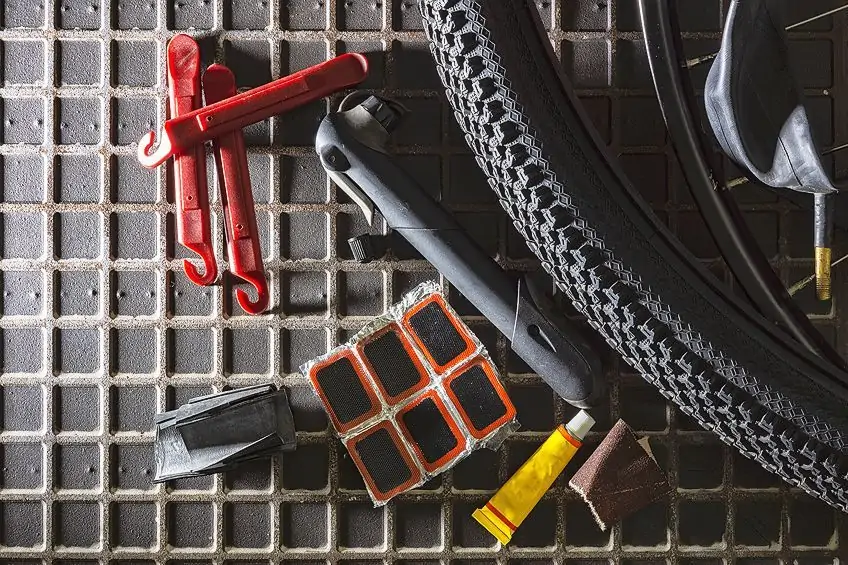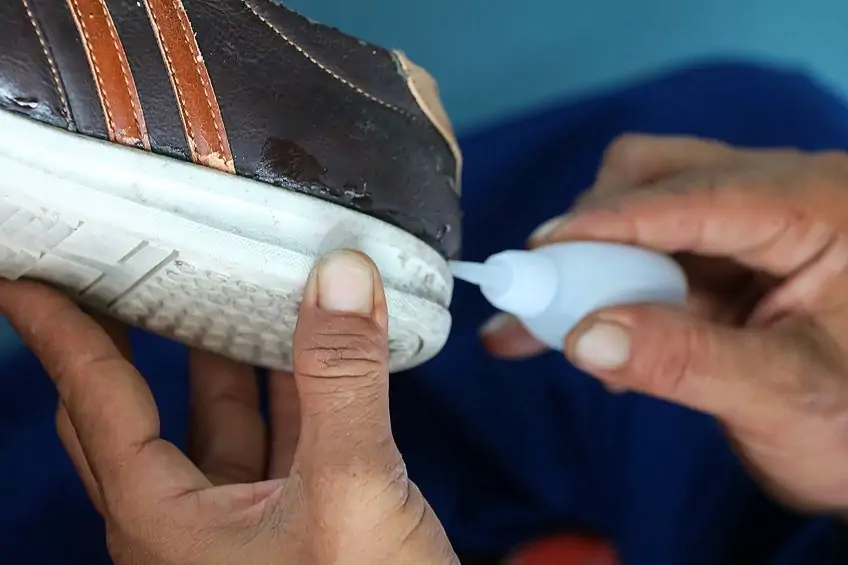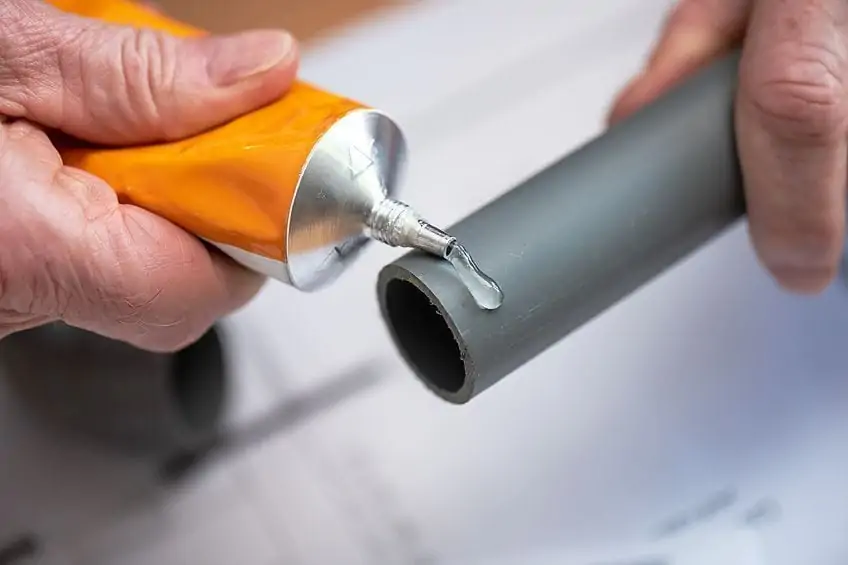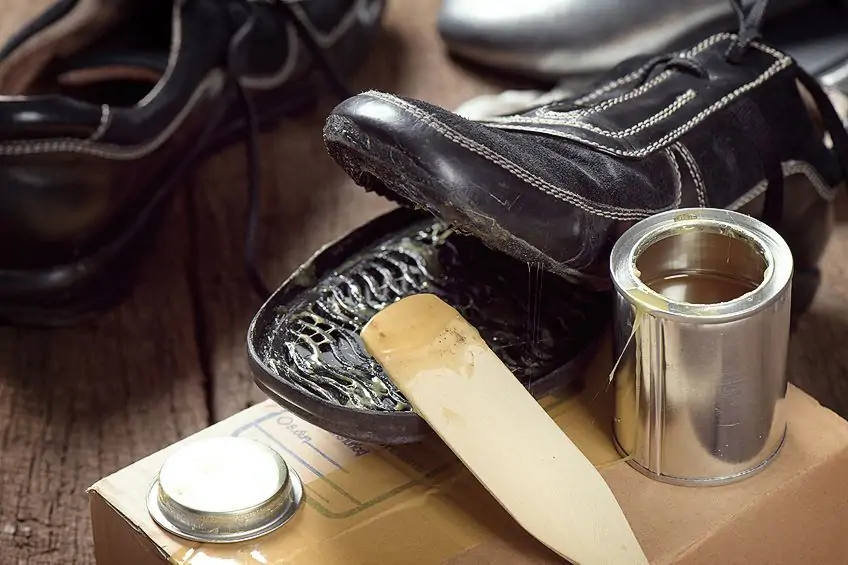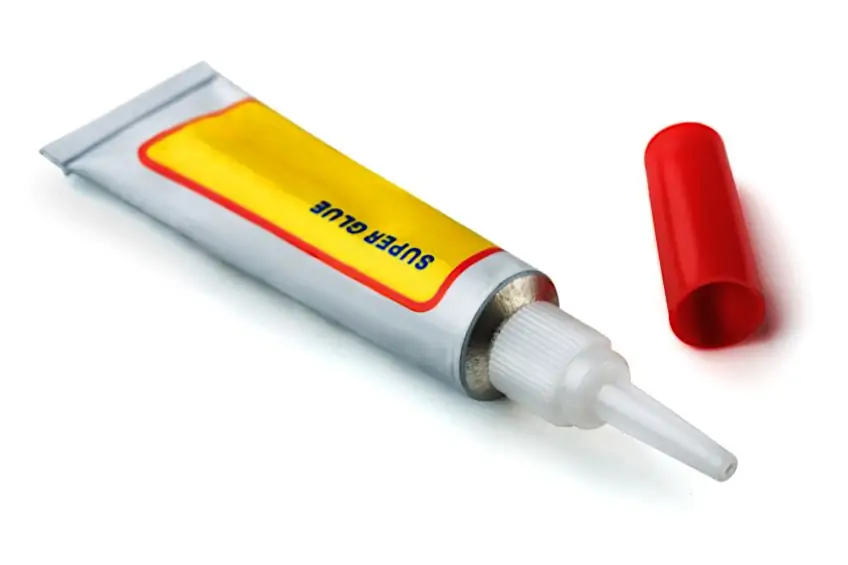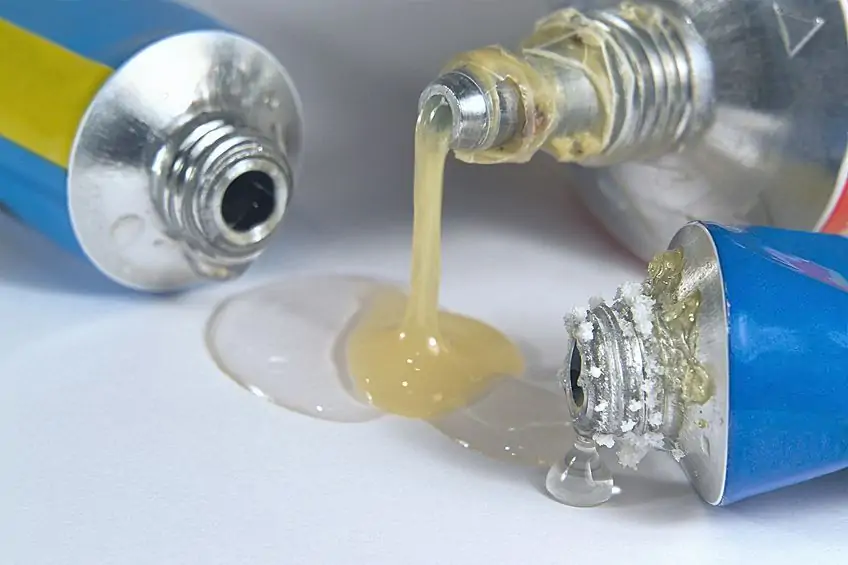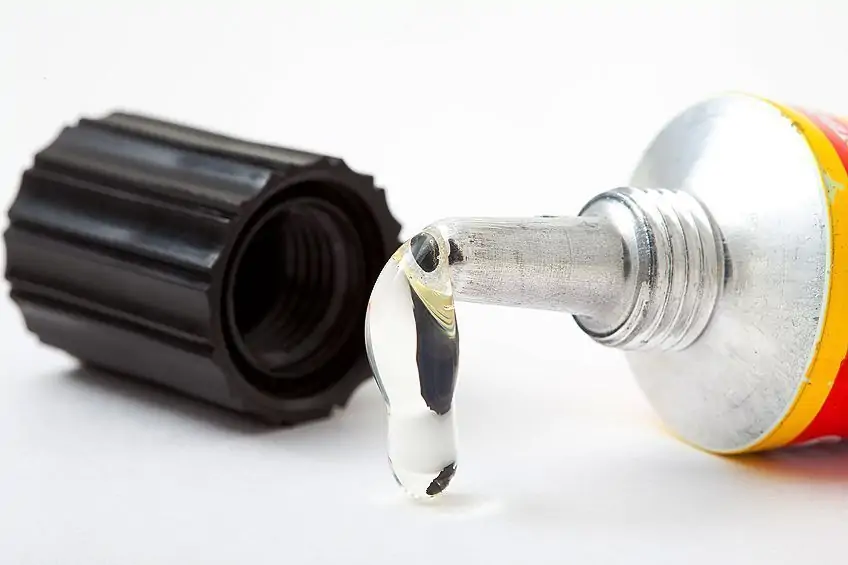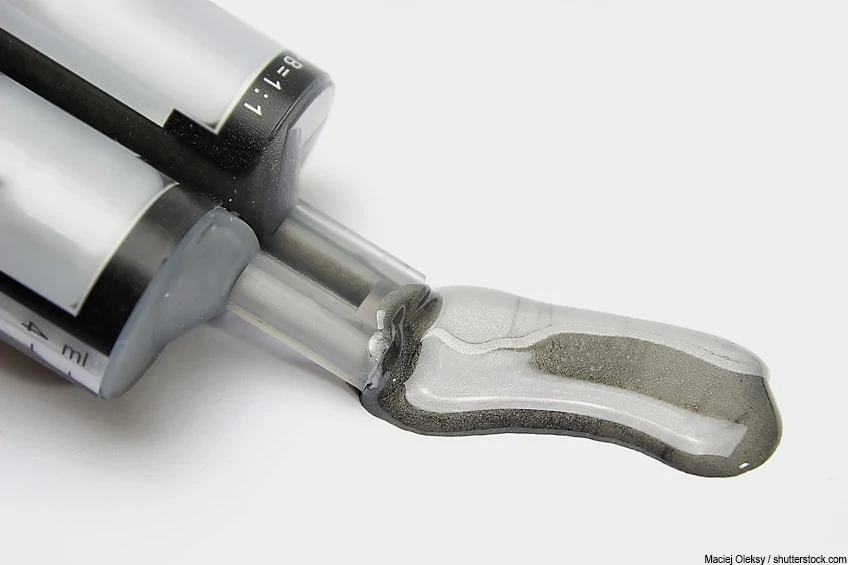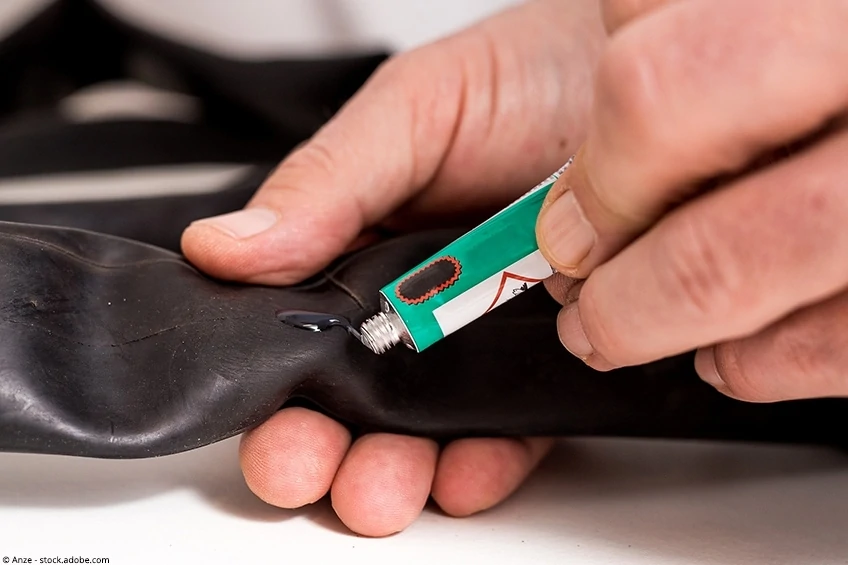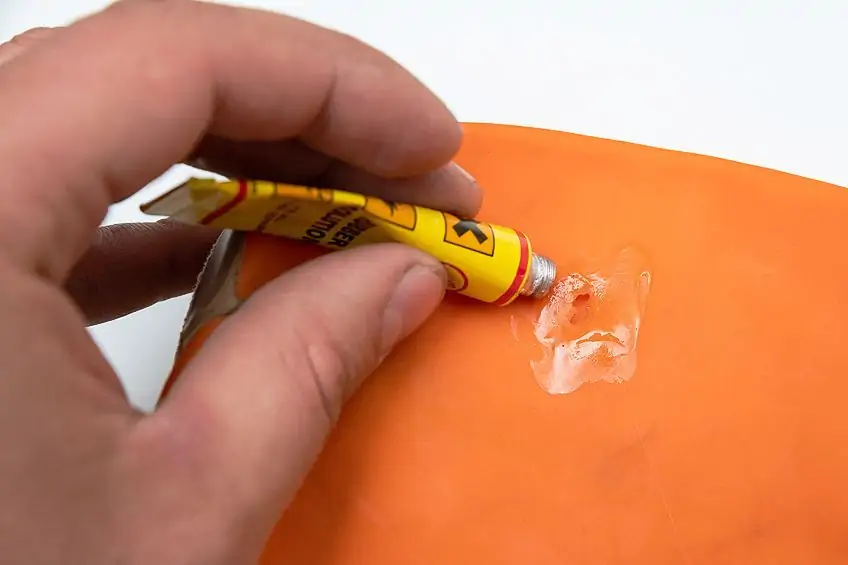Best Glue for Rubber – Choosing the Right Rubber Adhesive
This post may contain affiliate links. We may earn a small commission from purchases made through them, at no additional cost to you. You help to support resin-expert.com
Some users will wonder what they could use a rubber adhesive for because rubber bonding is still not commonplace. All too often, objects are disposed of and bought new instead of repaired. But this work is not a problem at all if you have the right adhesive for your application. In our adhesive guide, we introduce you to rubber glue and describe how to glue rubber to rubber or rubber to latex – and thus make even seemingly difficult repairs very easy.
Table of Contents
Exploring the Different Types of Rubber
Nowadays rubber is an everyday material from the group of elastomers that can be found everywhere. Due to its positive material properties, it is not only used in households but also in industry. The rubber material can be used for the following diverse items.
- Shoes, for example, rubber boots
- Other types of clothing
- Vibration damper
- Rollers
- Sealing rings, so-called O-rings
- Car Tyres
Today, rubber is produced from synthesized rubber in a process known as vulcanization. Sulfur is added to the rubber under high pressure and with the aid of great heat, which causes the material to cross-link. This makes the rubber highly elastic and has many highly positive properties.
The inventor of this process was Charles Goodyear in 1839.
What Are Different Types of Rubber Used for?
There are various different forms of rubber that can be used for all of these different purposes. Some forms of rubber, like silicone, natural, and polyurethane rubber are more common. These are the types of rubber that are commonly used in our daily lives. Within these different types of rubber, there are two main subcategories, soft rubber, and hard rubber.
Soft rubber is very elastic and contains a sulfur content that ranges between five and ten percent. In contrast, hard rubber does not have these elastic properties and contains significantly more sulfur, ranging between 30 and 50%. These two rubbers are the two extremes of the grade spectrum, as there are many different mixed forms. These forms include Elaste, Buna, Santoprene, and foam rubber. Foam rubber is the most known form to passionate hobbyists.
- Silicone rubber has high heat resistance, making it popular for use in cooking and oven equipment, prosthesis and other medical objects, and mechanical items like gaskets.
- Natural rubber is also used for mechanical items like gaskets, mountings, and seals.
- Butyl rubber is one of the more elastic rubbers and is most commonly used in inner tubes, stoppers, and seals.
- EPDM rubber is usually used in seals and hoses.
- Nitrile rubber is one of the more common rubbers, usually found in print rollers, hoses, conveyor belts, and gaskets.
The Properties of a Perfect Rubber Adhesive
The optimal rubber adhesive is not so easy to find if you attach importance to a particularly durable adhesive bond. This should be perfectly matched to the rubber compound and the intended use. Nevertheless, many types of adhesives are generally suitable for a solid bond and the range of available rubber adhesives is wide. Two-component adhesives are particularly suitable as well as superglues for most types of rubber. These two types of adhesive are also well suited for bonding rubber to other materials. For example, if you want to glue a rubber mat to wood, you can use one of the above-mentioned adhesives.
Versatility
Many materials can already be bonded with a commercially available all-purpose adhesive; however, these joints are often not as stable as those made with a special rubber adhesive. Apart from that, they contain solvents. For this reason, the flash-off time must be taken into account when bonding. They are also available as sprayable aerosol adhesives. There are also so-called hot melt adhesives, which are available as low melts or hot melts. These can be used to bond many materials together; they are also suitable if you want to bond latex, for example. They are also suitable if you want to bond rubber to metal.
Finally, you can also apply dispersion adhesives to various materials. These are water and temperature resistant and also offer very good adhesive properties.
Adhesion
Strong adhesion is one of the most important properties to consider when choosing the perfect rubber adhesive. Most rubber items are flexible, like the soles of shoes or rubber hoses, so your glue needs to be strong enough to bend and flex without breaking or cracking. Cyanoacrylate, or super glue, is one of the strongest options for bonding rubber. This glue will cure in seconds and only a small amount is perfect for bonding many different types of rubber securely. The best rubber glues also need to have a certain level of resistance to weather influences, heat, and water.
Curing Time
The curing time is also an essential consideration for rubber adhesives. Some glues set very quickly, like superglue, which can be a great way to tell very fast whether the bond is durable and strong. Others will take a little longer to set.
The rubber adhesive you choose depends on the urgency of your project.
Elasticity
The elasticity that you need for your rubber glue also depends on the project you want to complete. If you are needing to repair something like a hose or a rubber inflatable boat, you will need glue that can flex without cracking. As far as elasticity is concerned, you should pay attention to the sulfur content of the rubber glue. The higher the sulfur content, the less elastic the rubber glue is.
In summary, it can be said that a solid adhesive for rubber bonding should have the following properties:
- High adhesive properties
- Sealing function
- Rubber adhesive should be elastic and flexible and thus have good adaptability to any kind of holes, cracks, or gaps
- High resistance to mechanical influences
- High resistance to weathering
The Different Types of Rubber Adhesives
There are many different types of rubber adhesive available, and there are three that are most commonly used. These three rubber adhesives are cyanoacrylate, silicone-based glues, and two-part structural acrylic glues. We look at each of these in a little more depth below.
Silicone Rubber Adhesives
If you are looking for a highly flexible and elastic rubber adhesive, then silicone-based glue may be the perfect option. Very flexible after curing, silicone rubber adhesives are resistant to moisture, heat, and many chemicals when set. Depending on your needs, certain silicone-based adhesives can even give you conductivity and insulation for electricity. You can get silicone rubber adhesives with one part, or in two parts like an epoxy. While the two-part options do require a little more work, they may be more durable and can cure faster.
Often, two-part rubber adhesives also require curing under UV lights, while one-part options cure at room temperature.
Cyanoacrylate Rubber Adhesives
Also known as super glue, these adhesives are suitable for almost any rubber application. Not only this, but super glue is one of the most versatile options out there, suitable for many different surfaces too, like metal and plastic. The main ingredient in most cyanoacrylate adhesives is an acrylic resin that transforms after curing into plastic. The curing of super glue adhesives does require moisture, but the instantaneous bond is strong and very rigid. We do not suggest using this type of adhesive on rubber projects that require flexibility.
Structural Acrylic Rubber Adhesives
Epoxy glues are great for quick curing rubber adhesion. If you need to bond rubber or some of the more tricky plastics like PTFE or polypropylene, then these two-part epoxy glues are ideal. Compared to one-part glues, these epoxy adhesives have a longer shelf life.
They also dry a little more slowly than superglues, so your alignment can be adjusted if necessary.
A Summary of the Different Rubber Adhesives
In the table below, you will find a quick wrap-up summary of all the details we just discussed about these three types of rubber glue. You can use this to choose which glue will be best for your unique rubber bonding project.
| Glue | Flexible | One-Part | Suitable for Different Surfaces | Durable |
| Silicone | ✔ | ✔ | ✔ | ✔ |
| Cyanoacrylate | ✘ | ✘ | ✔ | ✔ |
| Structural Acrylic | ✔ | ✘ | ✔ | ✔ |
Best Rubber Glue for Almost All Types of Rubber Is Superglue
If you are looking for an alternative to rubber glue, you should look for an all-purpose glue or, even better, a superglue. Superglue owes its name to its extremely short curing time. It is also very easy to handle. It is usually supplied in a practical tube and can be applied with pinpoint accuracy. So you can perfectly glue rubber with superglue.
However, the advantage of the very short pot life of superglue is also a disadvantage: it is not suitable for gluing large surfaces. However, if you only want to apply a small amount of adhesive, you can use superglue.
Our Recommendation: GORILLA Super Glue
Our recommendation at this point is the Gorilla Super Glue Ultra Gel. It is available in different tube sizes and offers many advantages. If you want to stick rubber with superglue, you can follow this tip: If the adhesive does not adhere perfectly, you can slightly roughen the surface to be bonded. Afterward, the parts to be glued should be fixed. Gorilla Super Glue is suitable for household use and small repairs as well as for permanent bonding.
- No-run control gel formula that is great for use on vertical surfaces
- Versatile glue with an anti-clog cap to prevent it from drying out
- Specially formulated for increased impact resistance and strength
PROS
- Extremely strong adhesive properties
- High flexibility through the addition of micro rubber particles
- Unbreakable as well as shock-resistant bondings are possible
- Vibration damping and thus very gentle on the material
- Waterproof and resistant to weather conditions; therefore perfectly suited for outdoor use
- The consistency of the gel ensures a perfect application without drops and noses
- Easy to use and therefore also suitable for inexperienced craftsmen
- Perfect for bonding different materials together
- Also suitable for porous materials like wood and leather
- Solvent-free
CONS
- The vapors can irritate the mucous membranes so that safety protection in the form of safety goggles and a breathing mask is essential
- The drying time for different materials can be much longer than indicated; this seems to be the case especially with hard plastics
Epoxy Rubber Glue for Hard Rubber
If you want to achieve a really strong and durable bond between two different materials, you should use a two-component adhesive. This consists, as the name suggests, of two components that only react with each other when they are mixed. Then the processing phase, also called pot-life, begins. After this phase, the adhesive is completely cured and bonds the two materials extremely durably and permanently.
Our Recommendation: GORILLA 2 Component Adhesive
Especially if you want to glue a rubber mat on wood or rubber on metal, for example, a two-component adhesive is the best choice. The two-component adhesive is perfectly suited for all rubber applications. The bondings are permanent and practically undetectable. The epoxy glue is weather, temperature, and water-resistant. It can also be mechanically processed and painted on once cured. You can use this epoxy rubber adhesive to bond rubber to a range of different materials, including glass, metals, wood, and plastics.
- Strong, permanent, fast, and gap-filling epoxy glue
- Cures quickly, dries, clear, and is great for multi-surface application
- For tough repairs requiring a durable bond and solvent resistance
PROS
- The delivery is carried out in a double chamber cartridge
- The adhesive is designed for very high loads
- The pot life of ninety minutes is particularly long
- The adhesive, once cured, is weather, temperature, and water-resistant
- It can be mechanically processed and painted over after curing
- Suitable for many different materials
CONS
- The curing time of twelve hours at room temperature is relatively long
- In some cases, a cartridge may be half-full or less
Application Areas for Rubber Bonding
There are many unique applications for rubber bonding, not only in industry but also in every household. The best rubber adhesives are elastic, so they can perfectly bond and seal cracks and gaps without cracking and breaking. This enables the user to use the rubber adhesive also for the repair of damaged rubber objects. It offers a high level of protection against external influences. Some of the objects that you can use rubber adhesive are listed below.
- Rubber tires
- Shoe soles
- Rubber balls
- Hoses
- Inflatable boats
Especially inflatable boats and hoses benefit from the temperature and water-resistance of the rubber adhesive. It is even possible to attach accessory bags to the dinghy so that various items needed during the trip are within easy reach.
However, the adhesive is not only suitable for repairing or fixing objects quickly and easily. Rubber adhesive bonds different materials optimally with each other. It is also used for handicrafts with different materials. Especially the work with foam rubber is made very easy by the rubber glue. You can also use many rubber adhesives to effectively bond rubber to a range of different materials, including plastic, glass, and metal.
Even different materials can be optimally joined together with the rubber adhesive. Rubber adhesive is perfectly suited for model making, because it can not only be applied with pinpoint accuracy, but also bonds the different materials used in model making optimally and above all permanently.
Rubber adhesive also functions perfectly as TPE adhesive. This sounds trivial, but bonding thermoplastic elastomers is a challenge in itself. This is because the surface of TPE is low-energy and therefore very difficult to bond together. However, rubber adhesive has such good wetting properties that it can also be used very well as a TPE adhesive.
A Step-by-Step Guide for Gluing Rubber
Rubber bonding is not difficult and can be carried out even by inexperienced craftsmen. First of all, it should be said that the rubber adhesive should be tested on a small, inconspicuous area of the materials to find out whether it is really suitable. As already noted, the adhesive properties of the adhesive are related to the material composition of the materials to be bonded. If the rubber adhesive is suitable, you can apply it to the entire surface.
Preparation
- The optimal rubber adhesive should match the composition of the two materials to be bonded. This ensures that the bond is truly strong, durable, and impact resistant.
- To achieve perfect adhesion, the surface to be bonded should be absolutely clean. This refers not only to dust and dirt but also to any grease and oil deposits. You can use a nitro thinner for this.
- Roughen the surfaces with sandpaper to improve the adhesive’s adhesive properties. This gives the rubber adhesive more “grip”.
- You can further improve the adhesive properties by applying a primer. This is also called a bonding agent. It penetrates the surface and increases the surface energy. This improves the adhesive properties, especially if you want to bond rubber to metal. Furthermore, the surface must be completely dry.
Rubber Adhesive Application
- The adhesive is now applied evenly on one side, taking care that your skin does not come into contact with it. Also, ensure that your workplace is well ventilated. You can use a spatula or a brush to apply the rubber adhesive.
- If the rubber adhesive used is a solvent-based adhesive, you must observe the flash-off time. This is usually ten minutes, but in case of doubt, you should always follow the manufacturer’s instructions.
- Once the flash-off time has elapsed, press the two surfaces to be bonded together and fix them.
Curing / Finishing
- It takes up to 24 hours for the rubber adhesive to reach its final strength. This time varies depending on the ambient temperature and humidity. If you are unsure, it is better to give the joint a little more time than too little.
- The elasticity of the rubber adhesive is related to the drying time. The former decreases more and more as drying progresses.
- After the curing process, the bonded parts can be further processed mechanically as desired.
Bonding Rubber to Metal – or even to another material – is no problem as long as you use the right rubber adhesive. If you also make sure that the surface is clean and, if necessary, a suitable primer is used, then nothing stands in the way of a permanent bond. We hope we could help you with our professional tips for bonding rubber.
Frequently Asked Questions
How Do You Glue Rubber to Metal?
Clean the surfaces as described above, roughen them and apply a suitable primer before bonding to improve the adhesive properties. Then apply the adhesive and the surfaces are joined together.
How Can You Glue Latex?
Bonding latex is a challenge, as the adhesive used for this purpose must neither contain solvents nor be too hard, otherwise, there is a risk of either insufficient adhesion or deformation of the latex material. It is best to glue latex with a special latex adhesive.
What Is the Alternative to Rubber Glue?
You can also use a Two-Component Adhesive or a Superglue instead of a Rubber Adhesive. The latter is more suitable for small surfaces.
How Can I Remove Rubber Glue?
The adhesive, which is still wet, can be removed with the help of a soapy water solution, the hardened rubber adhesive can be removed with nail polish remover or white spirit. The hardened adhesive can only be scraped off hard objects.
Is There a Rubber or PVC Test?
Hold a small sample of material against a burning lighter. If there is a smell of burnt hair, it is rubber; if the material becomes sticky and eventually burns, it is PVC.


